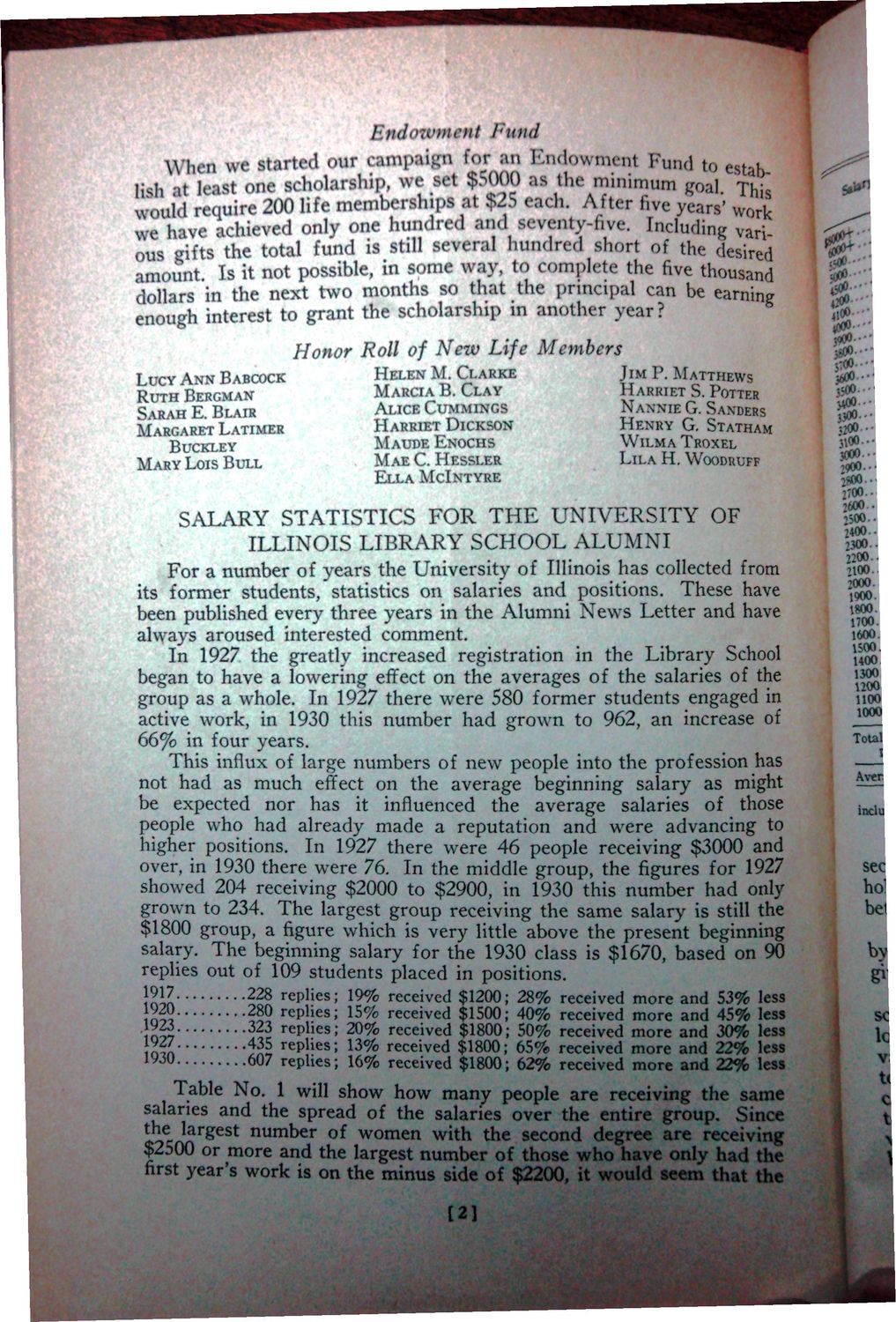| |
| |
Caption: UI Library School Alumni Newsletter - 14
This is a reduced-resolution page image for fast online browsing.

EXTRACTED TEXT FROM PAGE:
% /•iidowinrnt When we rund toestablish at least one scnoiara...,., w* ~ * ,,..,.,.„ ...,„„ ,.„„„ uim goal This would require 200 life memberships at $2.-) cadi. After ive years' work we have achieved only one hundred and seventy-five. Including various rifts the total fund is still several hundred short of the desired amount. Is it not possible, in some way, to complete tl e five thousand dollars in the next two enough interest to grant the scholarship in another year? Honor Roll of New Life Members LUCY ANN BABCOCK RUTH BERGMAN SARAH E. BLAIR MARGARET LATIMER BUCKLEY MARY LOIS BULL HELEN M. CLARKE MARCIA B. CLAY ALICE CUMMINGS HARRIET DICKSON MAUDE ENOCHS • MAE C. HESSLER ELLAMCINTYRE JIM P. MATTHEWS HARRIET S. POTTER NANNIE G. SANDERS HENRY G. STATHAM WILMA TROXEL LILA H. WOODRUFF SALARY S T A T I S T I C S F O R T H E U N I V E R S I T Y OF ILLINOIS LIBRARY SCHOOL ALUMNI For a number of years the University of Illinois has collected from its former students, statistics on salaries and positions. These have been published every three years in the Alumni News Letter and have always aroused interested comment. In 1927 the greatly increased registration in the Library School began to have a lowering effect on the averages of the salaries of the group as a whole. In 1927 there were 580 former students engaged in active work, in 1930 this number had grown to 962, an increase of 66% in four years. This influx of large numbers of new people into the profession has not had as much effect on the average beginning salary as might be expected nor has it influenced the average salaries of those people who had already made a reputation and were advancing to higher positions. In 1927 there were 46 people receiving $3000 and over, in 1930 there were 76. In the middle group, the figures for 1927 showed 204 receiving $2000 to $2900, in 1930 this number had only grown to 234. The largest group receiving the same salary is still the $1800 group, a figure which is very little above the present beginning salary. The beginning salary for the 1930 class is $1670, based on 90 replies out of 109 students placed in positions. 22 }££ * replies; 19% received $1200; 28% received more and 53% less J™) 280 replies; 15% received $1500; 40% received more and 45% less 32 •J*5* 3 replies; 20% received $1800; 50% received more and 30% less J™* Jii replies; 13% received $1800; 65% received more and 22% less 19J0 607 replies; 16% received $1800; 62% received more and 22% less Table No. 1 will show how many people are receiving the same salaries and the spread of the salaries over the entire group. Since r eSt n u m e r worn 4jocrv? ** ^ °* e n with the second degree are receiving $2500 or more and the largest number of those who have only had the first year's work is on the minus side of $2200, it would seem that the [2]
| |